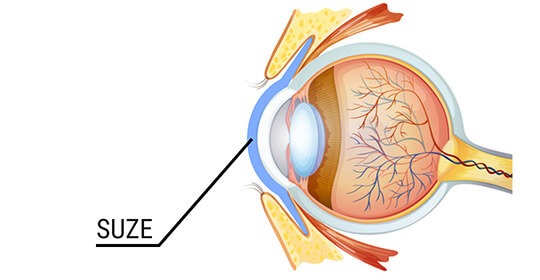
The lacrimal apparatus (Apparatus lacrimalis) is a part of the eye whose main function is the production and tears drainage. That helps to keep the cornea moist, which is a precondition for its transparency.
The composition of the lacrimal apparatus
The tears are produced in big lacrimal glands and in small goblet cells, which are dispersed over the surface of the conjunctiva. A thin layer of tears sits over the surface of cornea and conjunctiva, so that the tears are collected in the lacrimal river over the lower eyelid and lacrimal lake in the nose angle of the eyelids. From there they cross through the lacrimal dots in the inner part of the eyelid, then lacrimal tear ducts, to the lacrimal sac and in the end to the nasal cavity.
The tears themselves are a clear, salty liquid and are composed by 99% of water and 1% of other organic and inorganic substances. Its secretion is under the influence of the autonomous nervous system. The production of tears can be basal, daily in a constant small quantity, and reflective due to irritation of the eye surface or in strong emotional conditions such as happiness or sadness. In such situations, when we cry, the excess of tears that cannot reach the nasal cavity through lacrimal tear ducts will spill over the eyelids. That is also the reason why our nose gets stuffy when we cry a lot.
The importance of tears
The role of the tears, which is made by lipids (fat), aqueous and mucous layer is important because it lubricates the anterior surface of the eye and so the eyelids can slide smoothly over its surface. It also smoothens the cornea enabling the light to enter the eye without scattering.
Problems with the lacrimal apparatus can occur as a consequence of some systemic diseases, excessive contact lens wear, injury or eye surgery, old age, or as a consequence of taking certain medications. In those cases dry eye syndrome may occur, which is manifested by scratching, burning, feeling of a “foreign body” in the eye, and blurred vision. It is necessary to visit an ophthalmologist in order to diagnose, monitor, and prescribe the correct treatment.